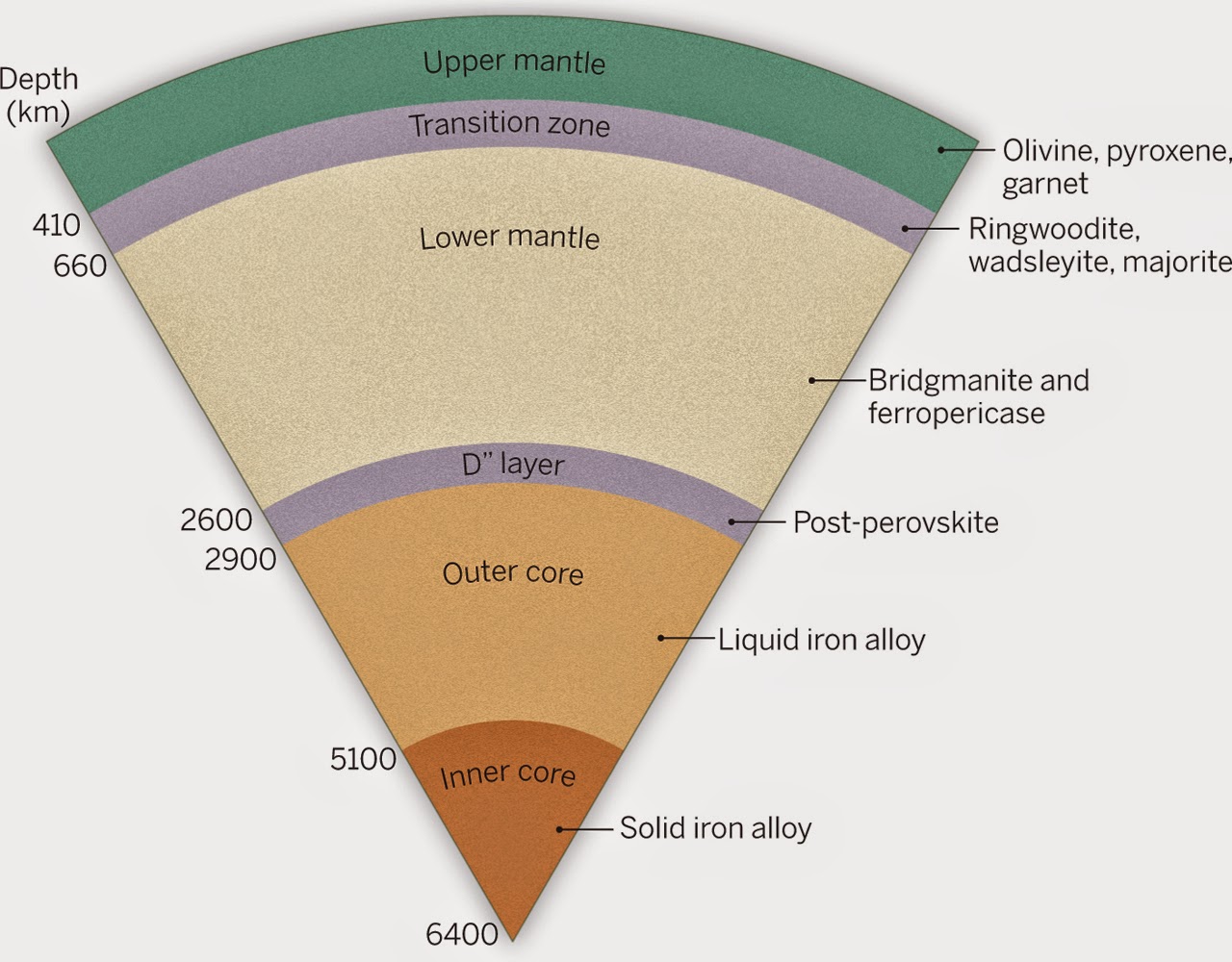If we were to rank all the minerals within Earth by their abundance, and use that ranking to pick a candidate for our interplanetary adventure, then we would have an easy winner. This mineral—which makes up about 38% of the Earth's volume—is thought to be the most abundant on our planet. It has been known for some time that this silicate mineral—(Mg,Fe)SiO3—has what is known as an orthorhombic ABO3 perovskite structure. Until very recently, however, it did not actually have a name. But now, based on work described in a new study published a few weeks ago in Science, the first detailed characterization of this long-known mineral phase has been conducted, and the mineral has finally been named.
Through the study of seismic waves, i.e., the energy generated by earthquakes, scientists can learn about Earth's interior structure. At certain depths—known as discontinuities—below the planet's surface the propagation of these waves changes abruptly. It is these changes in seismic wave velocity that help us build up a picture of the Earth's innards, in which a solid inner core, a liquid outer core, the lower mantle, and the upper mantle lie beneath the crust.
 |
| The 'ABO3 perovskite structure'. Credit: T. Imai et al./NTT Photonics Laboratories |
 |
| Interior structure of the Earth, showing the dominant mineral species in each layer. Credit: P. Huey/Science |
Official mineral names are approved by the International Mineralogical Association. But to suggest a name for a mineral through these official channels, its structure must be characterised from a naturally occurring sample. And this is the reason why our abundant mineral from the lower mantle has remained nameless for so long. In the absence of a suitable sample, researchers have been unable to conduct the required structural characterizations and therefore no name could be assigned.
But in the recently published work by Oliver Tschauner (University of Nevada, Las Vegas) and colleagues, a meteorite sample (Tenham) has come to the mineralogical nomenclature rescue. The authors have studied part of this chondrite, which fell and was then recovered from a remote part of western Queensland, Australia, in 1879. During a brief impact event, the parent body (i.e., an asteroid) of this meteorite experienced a period of very high pressures (more than 25 GPa) and temperatures (about 2500 K). These conditions are comparable to those in parts of Earth's deep interior. During this impact, some material melted and formed so-called shock veins. It is within these veins that Tschauner et al., found clasts of the 'missing' mineral to study.
Having found the required sample they next undertook a series of synchroton micro-X-ray diffraction and electron probe microanalysis measurements to definitively determine the mineral's crystal structure and composition. Their results were sufficient to meet the stringent requirements of the International Mineralogical Association, and the authors were finally able to propose a name for Earth's most abundant mineral. The name they settled on—bridgmanite—was chosen to honour the Nobel Prize laureate Percy W. Bridgman (1882–1961). His serendipitous machinery malfunction led to pioneering work in the field of high-pressure experiments, which paved the way for the field of modern-day mineral physics and our understanding of Earth's interior.
 |
| Percy W. Bridgman. Credit: Smithsonian Institution |
The Tenham meteorite—together with the newly named bridgmanite it contains—is yet another example of a geologic specimen I am choosing for our cosmological journey, which is not quite of the Earth. But with a hefty 38% of the mineralogical vote, brigmanite is a serious contender that cannot be ignored. So until we devise a way to get a terrestrial sample of Earth's most abundant mineral from the lower mantle itself, this meteorite will just have to do.
 |
| A thin section from the Tenham meteorite, from which newly-named bridgmanite was identified and characterized. Credit: Chi Ma |
No comments:
Post a Comment